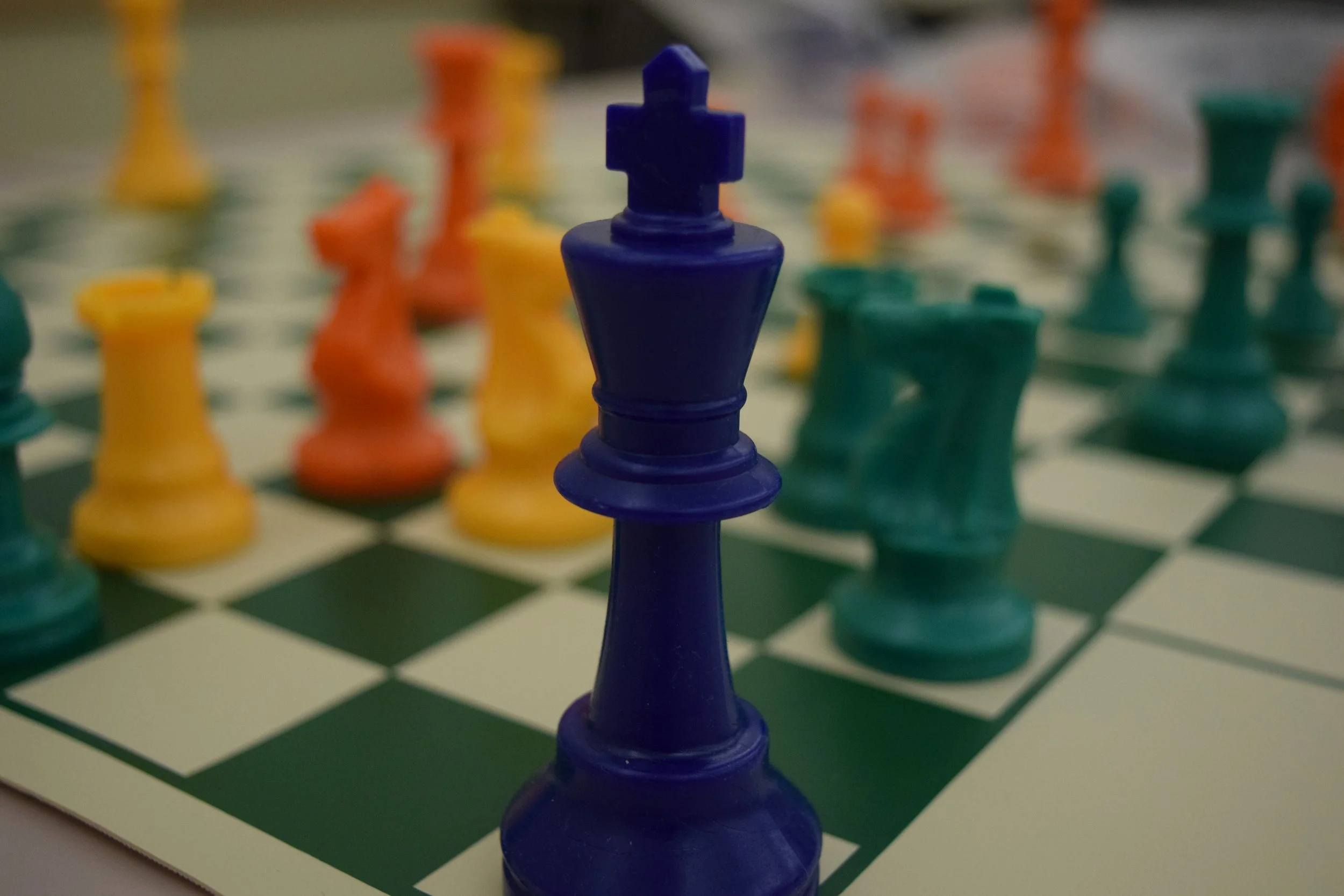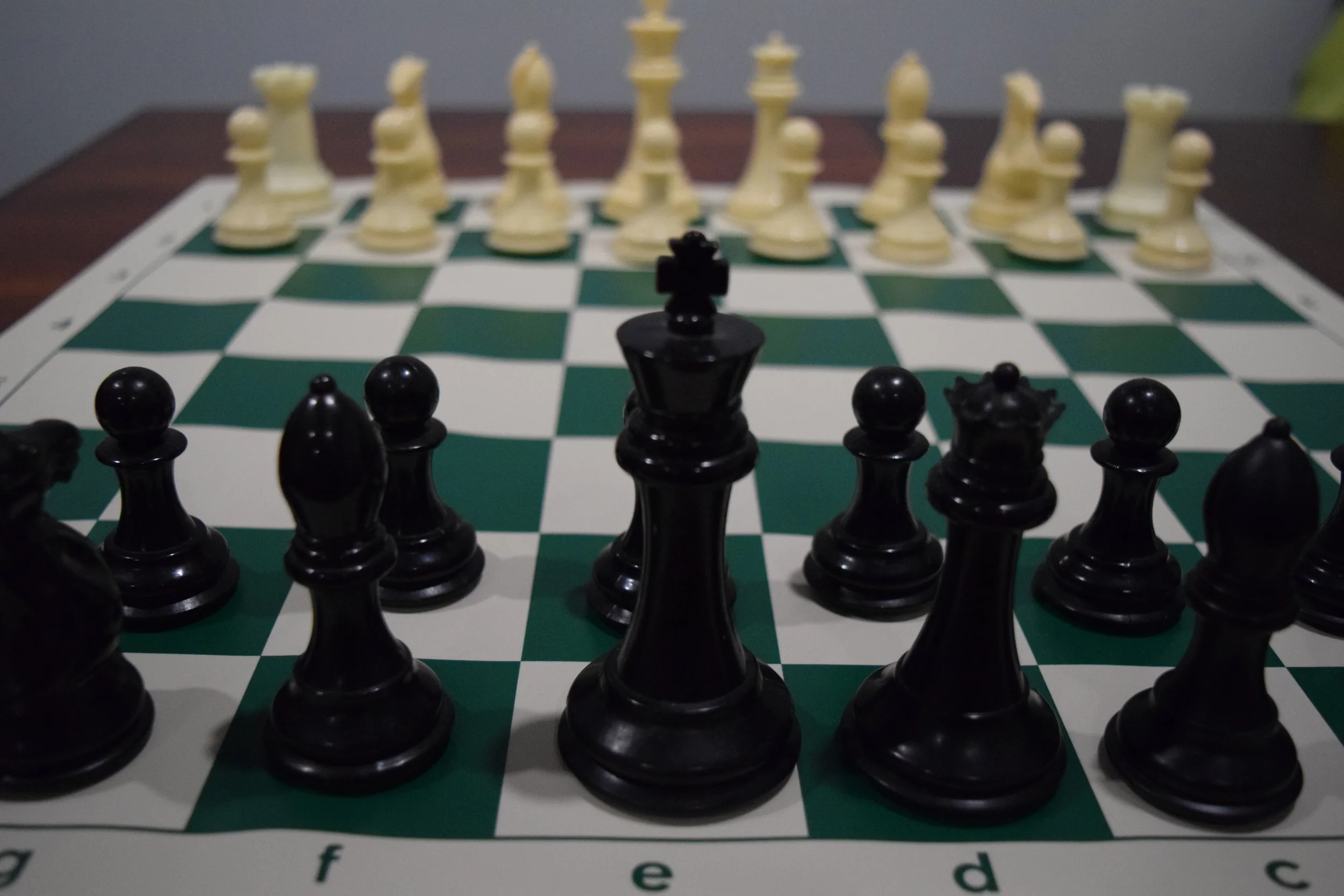What is Chess for Life?
Looking to volunteer? See our Volunteer Page for more information!
Chess for Life is a unique, restorative justice program that has been officially recognized by Alberta Justice. As an alternative sentencing measure, youth come to the University of Lethbridge for 25 hours of chess instruction.
Chess is used as the vehicle for change because it provides safe and structured opportunities for youth to practice and develop skills such as:
Inhibitory Control (look before you leap)
Working memory (keeping things in mind to complete a task)
Cognitive flexibility (think about good alternatives)
These are all executive functions which are a better predictor of life success than IQ or education. Chess also promotes other executive functions such as self-regulation and planning ahead. For more information on executive functions, head to the research section.
space
A chessboard has 64 squares or spaces. Each square or space, is important. Chess players have to use each space well. Games have been won and lost over one unprotected square.
Not unlike the spaces on the chessboard, we need to use our other spaces well: workspace, home-space, headspace, etc.
Chess for Life is a safe space for youth to gain valuable life skills while learning to think, think and think some more before they move.
Time
In chess, we only have so much time, and such is the same in life.
In Chess for Life, youth learn the value of time management. Whether it’s playing a game of chess or getting through a day, one needs to start it well, progress through it thoughtfully, and end it successfully. Chess for Life teaches about how to move through key times in a game: the opening, middle and endgame. As in life, there are good ways and not-so-good ways of managing these times.
harmony
ot unlike any organization, in chess, all the parts need to work together in harmony to ensure it can run well.
Over the board (OTB), everyone has 16 chess pieces. To achieve their common goal (checkmating the opponent’s king), they all need to work together, and move in harmony with one another. In chess, as in life, when there is disharmony, common goals are rarely achieved.
Chess for Life strives to re-establish and restore harmony among all members of a community. The program tries to nurture skills and ways of thinking that encourage youth to work in harmony with their surroundings, communities, families, etc.

History of Chess for life
In September 2016, Judge Derek Redman, Chief Judge Provincial Court of Alberta, sentenced a youth to basketball practice.
The youth had no priors. During the trial, Judge Redman found out the youth enjoyed basketball, and sentenced him to 30 minutes of basketball practice per day.
Dr. Lance Grigg read about the case in a national newspaper, and contacted Judge Redman to discuss the possibility of using chess as an alternate sentencing measure for youth involved in the criminal justice system.
Judge Redman liked the idea, and asked for some research on it.
In doing the research, he found out about a number of people around the world doing excellent things with chess and those involved in the criminal justice system:
Orrin Hudson at besomeone.org,
Carl Portman with prisons in the UK,
Maurice Ashley with the District attorney’s office in New York.
He also found interesting research on the role of chess in a number of related areas:
executive function,
learning disabilities,
addiction recovery, etc.
So, he got back to Judge Redman with the information who liked it, and the Chess for Life program began as a six month pilot project in January 2017.
DEVELOPMENTS
2017-2019
The pilot began with a small group of youth ranging in ages from 14-17 years old. They were referred to the program by youth Crown prosecutors at Alberta Justice. Youth were required to complete 25 hours of chess instruction as part of their probation.
The youth came to the University of Lethbridge every Friday afternoon from 1:00-3:00PM; some stayed longer and others, arrived early.
Upon entering the program, youth were given a tournament-style chess set and a carrying bag. With the re-launch after the COVID shutdowns, youth were also given chess masks and chess t-shirts.
At each session youth were provided with bags of chips, pizza, sandwiches, juice boxes, and a variety of candies
In the classroom, a number of things were prepared in advance:
a demo-board with a chess problem was set up
a live tournament was projected onto a screen in the front of the room
chess boards were set up with clocks on hand
food was set out for youth on a separate, large, table
When the youth were first brought to the university, a probation officer came along, and would introduce them to the Chess for Life team. We welcomed them, and gave them a new chess set. The youth would take the set out of the box, and set it up.
Some youth knew the basics so they’d set the board up themselves.
Those who didn’t, would set it up with a team member.
Note: These small details are important for creating a supportive environment.
Depending on skill levels, team members would sit down with the youth and play chess.
Those learning chess would begin with simpler games that gradually introduced the pieces: pawn wars, lonely knights, roaming rooks, etc.
Notably, regardless of skill levels, many youth enjoyed playing pawn wars. One game of pawn wars with a youth lasted for 35 minutes.
At around 3:00 or 3:30, a case worker or probation officer would come back and take them home.
Eventually, a number of youth began arriving and leaving on their own.
At the end of the six month pilot period, the program was reviewed.
Judge Redman, a senior administrator at Alberta Justice, a probation officer and myself sat down, and explored the program’s strengths and weaknesses.
Input from youth was also provided through the probation officers. We concluded the program was a benefit for the youth.
Program strengths included:
the university atmosphere itself; very positive, supportive and different from what they’re used to,
a feeling of safety and acceptance; youth didn’t feel judged,
snacks (food always works well),
youth appreciated owning a nice chess set.
Program weaknesses:
transportation to the university (for only a few)
Judge Redman made a formal application to register Chess for Life with Alberta Justice as an official, referral program. This gave judges and youth crown prosecutors an official capacity to refer youth to the program for 25 hours of instruction at the University of Lethbridge.
On January 1, 2018, Chess for Life became an official, ongoing referral program across Alberta.
To date, well over 50 youth have gone through the program.
2019-2021
As many in-person programs and initiatives were, Chess for Life was stood down during the shutdowns of the COVID-19 pandemic
2022 - PRESENT
We have secured an agreement with a local cab company to provide rides to youth participants on a chit system so there's no cost to them to travel to the program
We have begun a formal research study to better understand the success the program has seen
We are connecting with interested partners in Edmonton, Calgary and Brooks to help support expansion of the program
We are building a chess "curriculum" that can be taught by any anyone, regardless of their experience with chess
Chess for Life expanded into multiple senior centres, with the promise of research to follow
To date, well over 50 youth have gone through the program.


